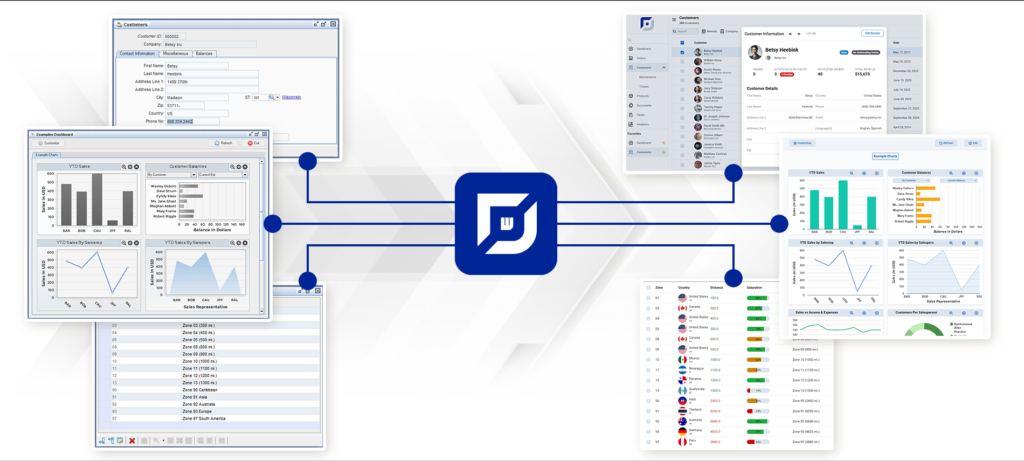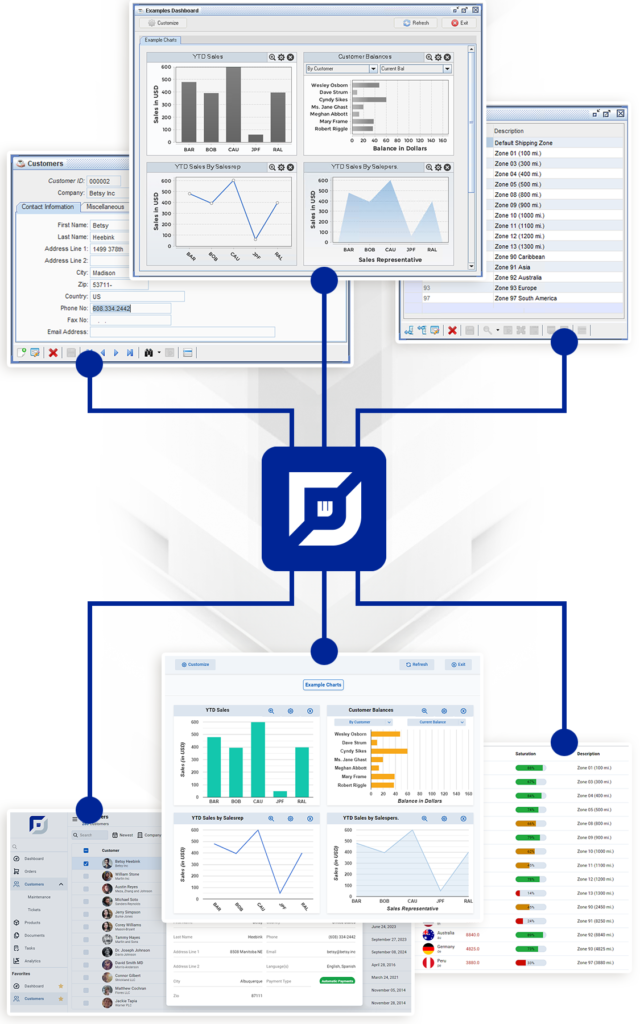
Java Framework for Modern, Scalable Web Applications
webforJ is a powerful Java UI framework designed for building business-critical web applications entirely in Java. It provides a comprehensive API, design system, and a rich library of UI components, allowing developers to create modern, secure, and high-performance web applications without needing to rely on additional web development languages or frameworks.

Why Choose webforJ?
Unified Java Development: Simplifying Full-Stack Web Applications
webforJ allows developers to manage both the front-end and back-end of an application within the Java programming language, eliminating the need for separate codebases in HTML, JavaScript, or CSS.
This unified development approach simplifies workflows, reduces the complexity of managing multiple technologies, and accelerates project timelines.
By writing both the user interface and business logic in Java, developers can enjoy faster development cycles and easier maintenance, while avoiding the typical integration issues faced when working with multiple languages.

Consistent Design System and Theming
The webforJ design system offers a wide range of UI components that ensure consistency across all screens and devices.
With built-in CSS theming capabilities, developers can quickly customize the look and feel of their applications to match project-specific branding or visual guidelines. For more granular control, custom CSS can be applied to fine-tune the design.
This flexibility helps ensure that applications not only function well but also provide a professional and visually appealing user experience.

Extensibility: Integrate and Extend with Ease
While webforJ provides a comprehensive set of pre-built components for most common use cases, it also offers seamless integration with third-party libraries and frameworks.
Developers can easily embed popular HTML5 web components or create their own custom components to address specific requirements.
This extensible architecture ensures that webforJ can adapt to any business need, whether using ready-made components or developing custom solutions.

Zero-Deployment: Simplifying Application Updates
webforJ’s zero-deployment architecture enables businesses to instantly update applications across all users without the need for manual updates or complex deployment procedures.
This is especially beneficial for large enterprises with extensive user bases, where rolling out updates can be time-consuming and error-prone.
With webforJ, organizations can enjoy faster deployments, reduced downtime, and simplified maintenance, all while keeping the application environment up to date with minimal effort.

Flexibility with Full Browser Access
Although webforJ allows developers to build fully functional web applications without writing HTML, JavaScript, or CSS, it does not limit flexibility.
Developers still have full access to JavaScript APIs and can inject custom HTML and CSS as needed for more advanced use cases.
This flexibility ensures that webforJ can meet the demands of both typical enterprise projects and more complex, highly customized applications that require deeper control over client-side functionality.

Enhanced Security: Keeping Business-Critical Data Safe
Security is a central focus in webforJ’s architecture. Unlike frameworks that expose client-server communication more openly, webforJ uses obfuscated messages and events to communicate between the front-end and back-end.
This makes applications built with webforJ more secure by preventing direct access to sensitive APIs and reducing the risk of data scraping or unauthorized data access.
Additionally, business logic remains safely on the server, reducing the need for external API security gateways and ensuring greater protection against common threats like denial-of-service attacks.

Performance Optimized for Enterprise Use
webforJ is designed to maximize performance through its thin-client architecture, which ensures only the necessary data and event messages are transmitted between the client and server.
This minimizes network traffic and optimizes bandwidth usage, leading to faster load times and a more responsive user experience.
The framework only loads the data that is currently visible, ensuring efficient memory usage and faster processing times, making it ideal for real-time, data-heavy applications.

Accessibility Built-In for Inclusive Applications
Accessibility is a core feature of webforJ, ensuring that all UI components are built to support WCAG standards.
This guarantees compatibility with screen readers and other assistive technologies, allowing developers to create applications that are accessible to users with disabilities.
By embedding accessibility into the core components, webforJ enables developers to build inclusive applications without needing to implement additional third-party accessibility tools.

Enterprise-Ready: Built for Mission-Critical Systems
webforJ is tailored for enterprise-level applications, where reliability, scalability, and security are non-negotiable.
Industries such as finance, healthcare, and manufacturing benefit from webforJ’s ability to handle high concurrency, protect sensitive data, and provide the scalability needed for large user bases.
Whether building a complex ERP system, a financial dashboard, or a customer management platform, webforJ delivers the performance and security needed to power mission-critical systems.

Future-proof your application -
with webforJ
by BASIS International
Almost 40 years assisting organizations to modernize mission-critical systems,
20+ years of delivering technology built on Java
